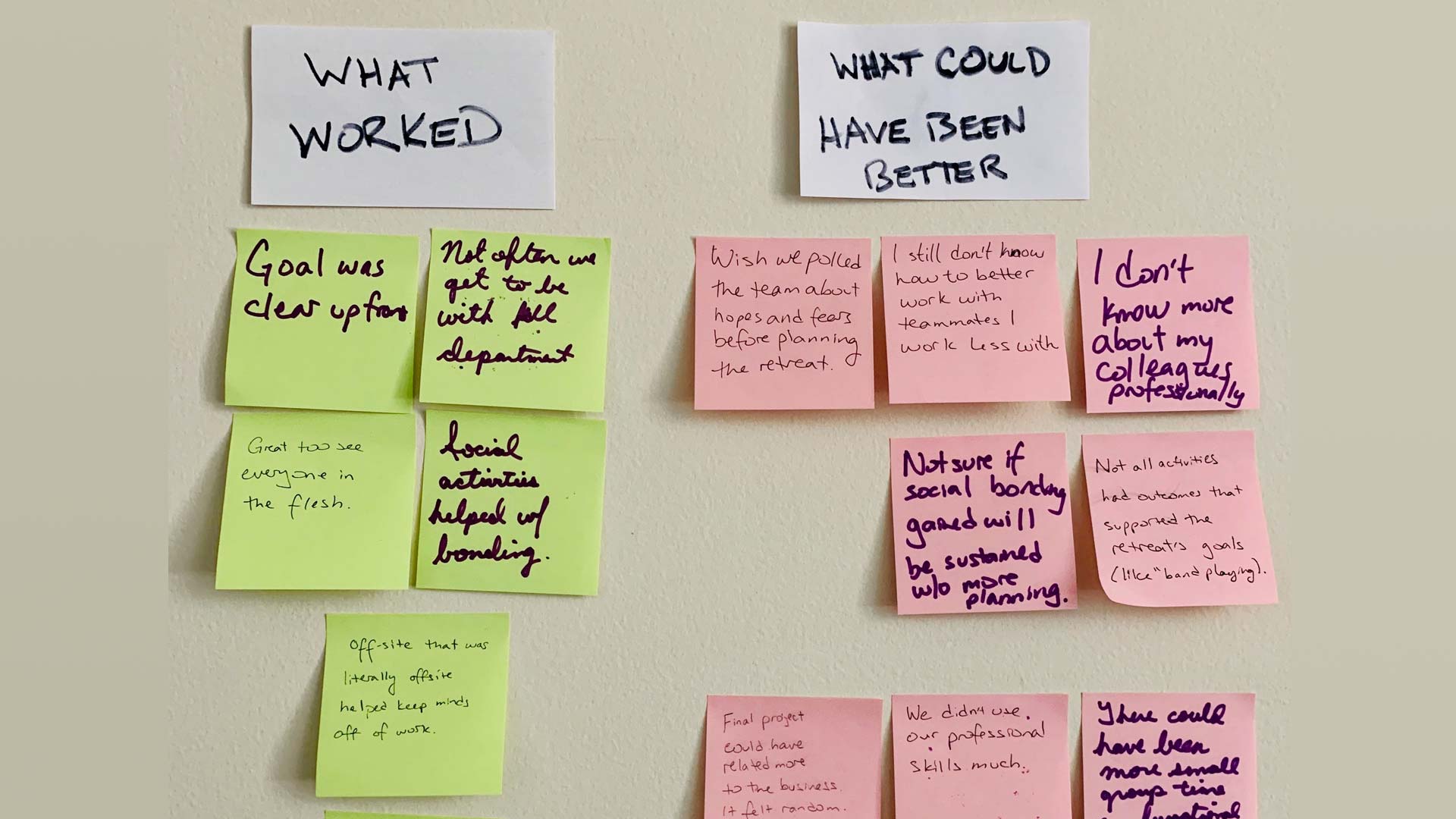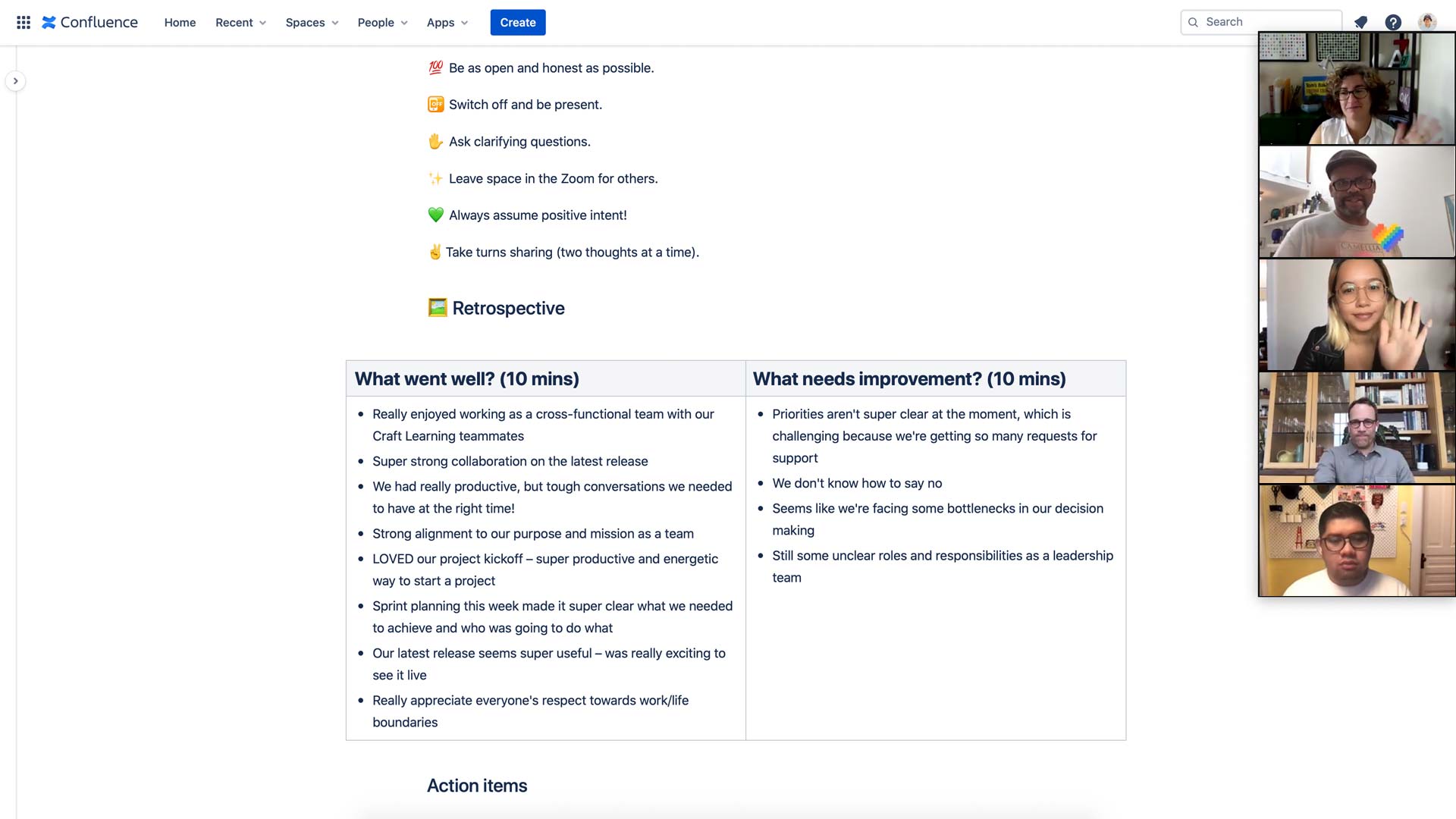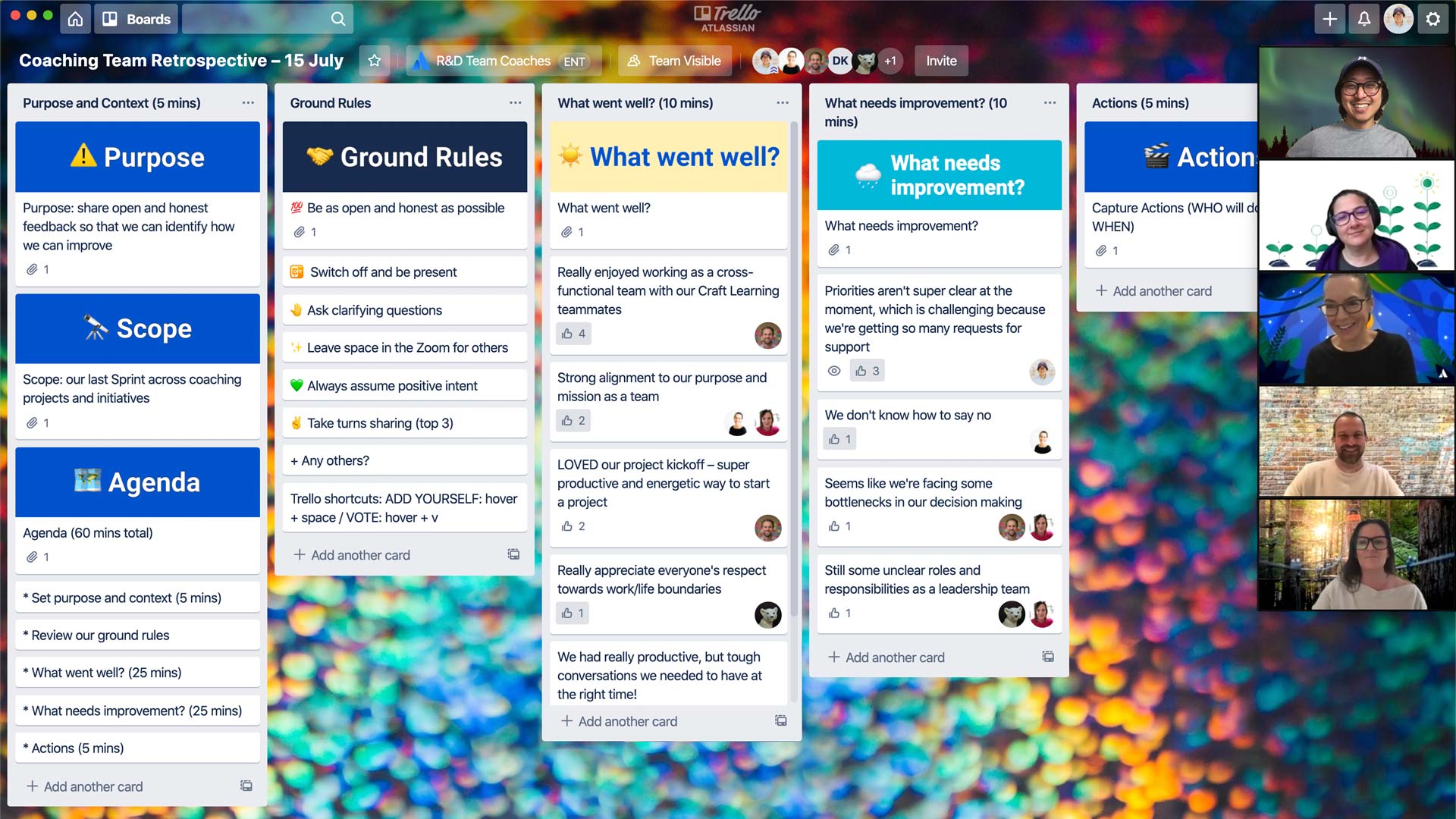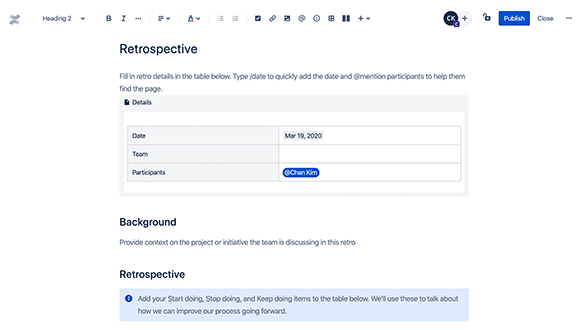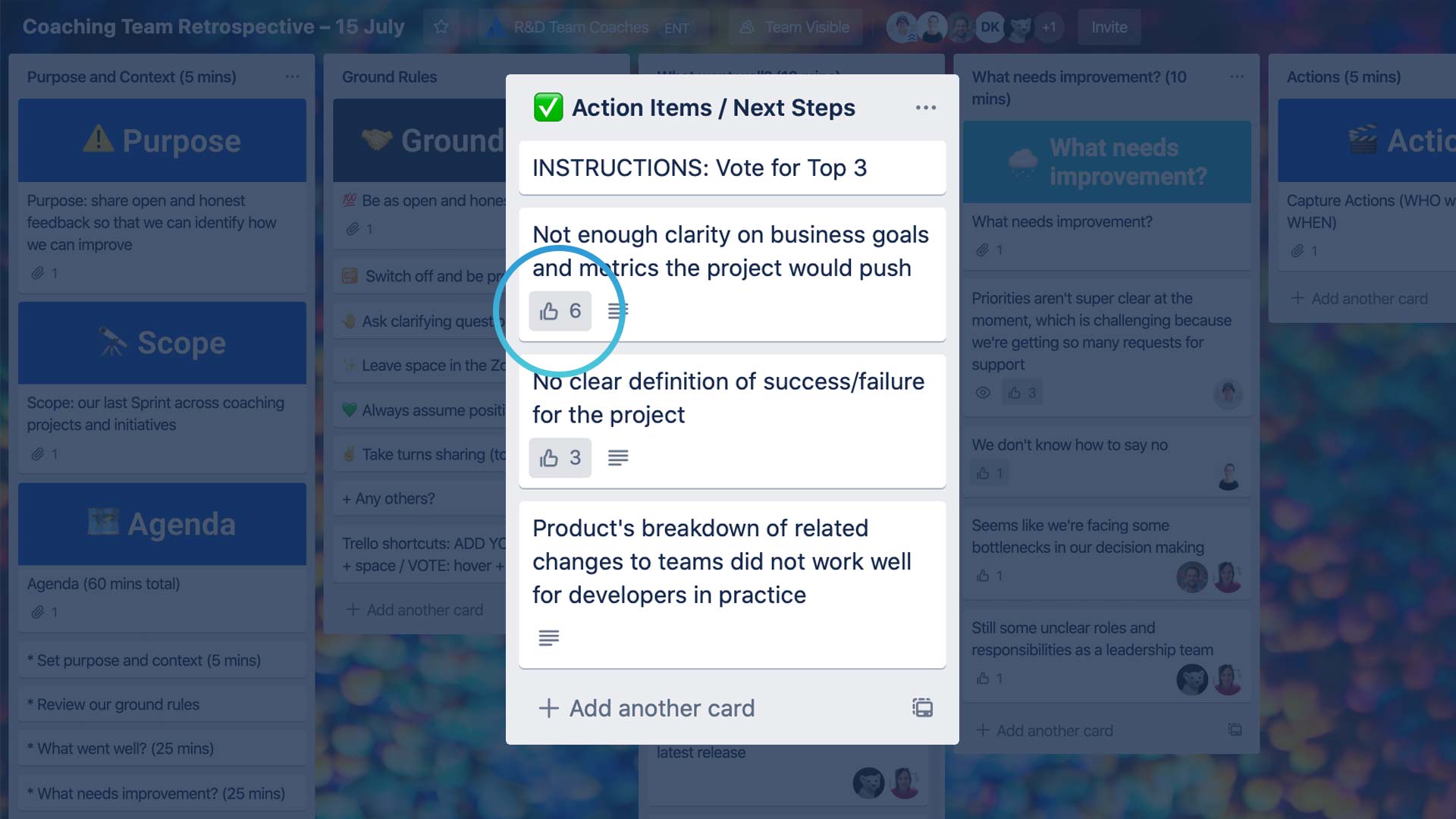스프린트 회고
스프린트 회고를 통해 최신 스프린트를 검토하고 향후 스프린트를 개선할 수 있습니다. 정기적으로 프로세스를 평가 및 개선하면 양질의 결과를 얻고 장애물을 극복할 수 있으므로 이 미팅은 필수적입니다.
이 가이드에서는 스프린트 회고가 무엇인지, 왜 중요한지, 그리고 스프린트 검토를 성공적으로 수행하여 팀을 더 효율적으로 만드는 방법은 무엇인지 살펴봅니다.
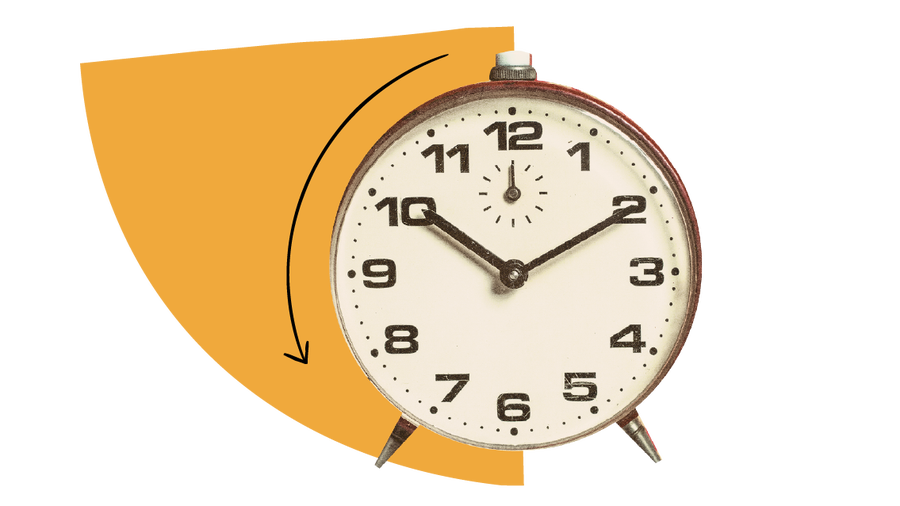
준비 시간
15분
진행 시간
60분
인원
4~8명
5초 요약
- 지난 스프린트 중에 잘 진행된 부분을 축하합니다.
- 잘 진행되지 않았거나 더 잘할 수도 있었던 부분에 대해 논의합니다.
- 다음 스프린트에서 개선할 방법을 결정합니다.
- AI를 사용하여 인사이트를 요약하고 요점을 생성하고 더 쉽게 조치를 취하세요.
필요한 사항
- 화면 공유가 가능한 미팅 공간 또는 화상 회의.
- 디지털 공동 작업 도구(템플릿 참조).
- 선택 사항: 실물 화이트보드, 마커, 스티키 메모 및 타이머.
스프린트 회고의 운영 방식
지난 스프린트를 되돌아보며 미래를 위해 개선합니다.
스프린트 회고란 무엇입니까?
스프린트 회고는 애자일 방법론에서 핵심적인 역할을 하는 스프린트 이후에 진행되는 검토입니다. 스프린트 회고는 어떤 부분이 잘 진행되었는지, 어떤 부분에서 문제가 있었는지 파악하고 개선할 수 있는 영역을 식별하는 것을 목표로 합니다.
정기적인 검토는 팀 공동 작업에 필수 요소입니다. 효과가 있는 것과 그렇지 않은 것을 이해하면 애자일 프로세스를 개선하여 다음 스프린트를 간소화할 수 있습니다.
AI가 스프린트에서 설명서를 찾아주고 요점을 요약하고 실행 가능한 단계를 생성해 주므로 스프린트 회고에서 훨씬 많은 가치를 얻게 됩니다.
스프린트 회고는 얼마나 자주 해야 합니까?
회고는 각 스프린트 마지막에 하는 것이 가장 효과적입니다. 하지만 스프린트가 1주일 정도로 짧은 경우 두 번의 스프린트마다 회고하는 것이 더 합리적일 수 있습니다.
스프린트 회고는 얼마나 진행해야 합니까?
스프린트 회고 미팅의 기간은 스프린트 기간에 따라 달라질 수 있습니다. 짧게는 45분에서 길게는 3시간까지 가능합니다. 팀원이 의미 있는 대화를 나눌 수 있도록 충분한 시간과 공간을 제공하세요. 미리 시간을 조금 더 투자하면 시간을 절약하고 장기적으로 결과를 개선할 수 있습니다.
스프린트 회고의 주요 이점은 무엇입니까?
스프린트 회고를 수행하면 팀이 과거로부터 배우고 향후 개선할 수 있으며, 스크럼 스프린트를 간소화하고 더 나은 최종 결과를 얻을 수 있습니다.
연구에 따르면 회고는 팀에 다음과 같은 주요 이점을 가져다줍니다.
- 지속적인 개선 달성
성장을 위해서는 작업 계획을 수립하고 향후 미팅에서 이에 대해 후속 조치하는 것이 중요합니다. - 팀 재귀성 향상
재귀성이란 '팀원이 팀 목표, 전략, 프로세스를 총체적으로 반영하고 현재 또는 예상 상황에 맞게 조정하는 정도'를 의미합니다.
팀의 재귀도가 높을수록 혁신하고 문제 및 기회를 파악하며 변화에 적응하고 새로운 아이디어를 효과적으로 구현하는 데 보다 능숙합니다.
높은 재귀성은 다음과 같은 효과로 이어집니다.
- 더 효과적인 의사 결정
- 더 나은 문제 해결
- 더 효과적인 전략 구현
- 팀의 배운 점 확장
- 더 강한 혁신
-
변화에 대한 적응성 향상
다른 연구에서는 재귀성이 팀에 다음과 같은 도움이 된다는 점을 강조합니다.
- 더 철저하게 정보 처리
- 오류와 실패 축소
- 상황이 바뀌면 더 민첩하고 유연하게 수행
스프린트 회고 미팅 아이디어
스프린트 회고는 처음에는 어려워 보일 수 있지만 꽤 간단한 개념입니다. 스프린트 회고 템플릿을 사용하거나 이 가이드에 나오는 5단계를 따라도 됩니다. 수집한 피드백을 바탕으로 인사이트를 창출하고 변화를 구현한다면 잘하고 계신 것입니다.
모든 스프린트 회고는 성공적인 스프린트에서 시작됩니다. Jira는 다음을 포함하여 성공적인 스프린트를 구성하는 데 도움이 되는 주요 기능을 제공합니다.
- 백로그: 백로그를 사용하면 프로젝트 또는 이니셔티브와 관련된 모든 작업을 나열할 수 있습니다. 이 작업을 보통 2주 기간의 개별 스프린트로 나눌 수 있습니다.
- 보드: Jira 보드를 사용하면 대규모 프로젝트를 관리하기 쉬운 여러 작업으로 나눠 스프린트를 계획하고 산출물을 더 빠르게 제공할 수 있습니다.
- 타임라인: 타임라인은 작업 항목, 종속성, 릴리스가 매핑된 프로젝트 타임라인의 개요를 제공하여 팀이 이해 관계자와 항상 같은 내용을 공유하도록 합니다.
Jira를 사용하면 애자일 팀이 스프린트를 쉽게 시각화하고 추적하고 관리할 수 있습니다. 또한 다음 스프린트를 간소화하여 적시에 산출물을 제공할 수 있습니다. Jira 스크럼 보드를 사용해 보고 Jira가 애자일 팀을 최적화하는 데 어떻게 도움이 되는지 확인하세요.
1. 분위기 조성
예상 시간: 5분
회고는 스프린트 계획 프로세스의 일부입니다. 목표는 다양한 피드백 및 관점을 수집하여 프로세스 및 결과를 개선하는 것입니다. 미리 만들어진 템플릿 중 하나를 사용하면 프로세스가 더 원활해집니다.
미팅 초반에는 팀원들이 세션 내내 자신의 개방적이고 솔직한 생각을 정중하게 공유하고 비난보다는 개선에 초점을 맞추도록 격려합니다. (이것이 심리적 안전과 비난을 배제한 문화를 발전시키는 열쇠입니다.) 팀이 회고 자체에 집중할 수 있도록 Loom AI를 미팅에 추가하여 메모를 캡처하세요.
마지막으로, 팀이 피드백의 어조 또는 표현 방식에 대한 우려 사항이 있는 경우 Rovo와 채팅하도록 권장하세요.
팁: 안전한 공간을 조성하세요
회고 중에 논의한 정보를 처리할 방법을 명확히 합니다. 계속 그룹 내에서 공유합니까? 정보가 리더십과 공유됩니까? 팀원들이 안전하고 편안하다고 느끼도록 채텀 하우스 규칙을 채택해 보세요.
2. 피드백 수집
예상 시간: 15분
미팅 분위기 및 기대치를 설정하면 지난 스프린트가 어땠는지에 대한 팀원들의 피드백을 수집할 수 있습니다. 이를 수행하는 몇 가지 방법은 다음과 같습니다.
- 💬 잘된 점과 그렇지 못한 점에 대한 공개 그룹 토론
- 🗒 ️설문 조사(익명 또는 특성)
- ❤️ 4L 회고: 마지막 스프린트 중에 좋았던 점(Loved), 싫었던 점(Loathed), 배운 점(Learned) 및 바랐던 점(Longed for)에 대해 논의합니다.
- 🙂 슬픔, 기쁨, 분노 프레임워크: 팀원들이 각각의 감정을 느끼게 된 이유에 대해 논의합니다. 어떤 점이 아쉬웠습니까? 답답한 상황이 있었습니까? 신나고 고무적이었습니까?
- Rovo 검색을 사용하여 피드백의 컨텍스트를 파악하는 데 도움이 되는 관련 페이지 또는 티켓을 수집하세요.
팁: 팀원이 계속 대화하도록 만드세요
스프린트 회고의 가장 큰 장애물 중 하나는 팀원들이 피드백을 충분히 공유하지 않는 경우입니다. 안전한 공간을 만드는 것 외에 4L 또는 슬픔, 분노, 기쁨과 같은 간단한 구조로 대화를 이끌어가 보세요. 또한 익명으로 의견을 수집해 볼 수도 있습니다.
누군가 대화를 주도하고 있다면 다른 팀원의 생각은 어떤지 질문해 보세요. 이렇게 하면 모두가 본인 목소리로 의견을 전달할 수 있습니다.
3. 피드백을 인사이트로 전환
예상 시간: 20분
그룹으로서 피드백의 패턴과 동향을 찾아보세요. 무엇을 배웠나요? 좋은 점을 기반으로 발전하고 나쁜 점들은 최소화하거나 피하려면 어떤 변화가 필요합니까? 이러한 인사이트는 목표 설정과 개선에 중요한 역할을 하므로 모두 각자의 인사이트를 공유하도록 장려하세요.
팁: 동향을 포착하세요
스프린트 회고는 다음 스프린트를 개선하기 위해 수행하므로 일회성 실수 또 다시는 발생하지 않을 성공 사례보다는 패턴과 동향에 더 집중합니다.
팁: 그룹에 Rovo를 포함하세요
Rovo 채팅을 사용하여 피드백의 주요 패턴 및 추세를 파악하세요.
4: 작업 항목 만들기
예상 시간: 15분
이제 인사이트를 실천에 옮길 차례입니다. 거기서부터 목표 설정을 시작하고 향후 스프린트를 어떻게 변경할지 결정하면 됩니다.
변경 사항 및 작업 항목을 문서화하려면 담당자 및 마감 날짜를 지정하여 진행을 시작합니다.
팁: 작업 목록에 작업 항목을 추가하세요
작업 항목을 스티키 메모 또는 디지털 문서에 작성하는 대신 (또는 추가로) Jira나 Trello 같은 스프린트 계획 또는 프로젝트 관리 시스템에 직접 입력하여 계획에 이미 통합됩니다.
작업 항목에 관련 티켓 또는 이슈가 있는 경우, 해당 링크를 회고 페이지 및/또는 작업에 포함하면 상태를 손쉽게 확인할 수 있습니다.
팁: AI Chat을 사용하세요
AI Chat을 통해 피드백, 패턴 및 인사이트를 실행 가능한 다음 단계로 전환하세요.
5. 결론
예상 시간: 5분
기여해주신 모든 분들께 감사를 표하고 주요 시사점 요약 및 작업 항목을 공유하며 스프린트 회고를 마무리합니다. 이제, 다음 스프린트로 넘어갑니다!
변형
회고가 너무 오래되지 않도록 확인란에 체크하고 목적 없이 흘러가는 시간은 여기서 끝냅니다. 대화를 장려하는 방법은 다양하므로 실험해보고 그룹에 가장 적합한 방식을 찾아봅니다. 다음은 가장 즐겨 사용하는 9가지 스프린트 회고 연습입니다.

질문이 더 있으신가요?
다른 Atlassian 팀 플레이북 사용자와 대화를 시작하고 지원을 받거나 피드백을 제공하세요.
선호할 수 있는 기타 플레이
미팅
주간 팀 업데이트
또 다른 미팅을 예약하지 않고도 진행 상황을 공유하세요.
미팅
페이지 중심의 미팅
더 효과적인 미팅은 목적, 예상 결과 및 주요 논의 사항을 요약한 페이지에서 시작됩니다.
커뮤니케이션
사용 설명서
팀원이 여러분과 가장 잘 협업할 수 있는 방법을 이해하도록 지원하세요.
문화
팀 상태 모니터
팀 상태를 평가하고 개선 계획을 결정합니다.
최신 정보 알기
Atlassian 뉴스레터에 가입하여 플레이 및 Work Life에 대한 최신 정보를 받으세요.







